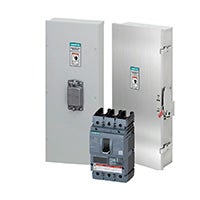Protection HowToMakeShortCircuitProtection Circuit Diagram Circuit protection refers to the comprehensive set of mechanisms and devices designed to safeguard electronic circuits from a wide range of potential threats. It acts as an impenetrable shield, shielding your circuits from overcurrent, voltage spikes, and various other electrical anomalies that can wreak havoc on your devices. Overvoltage Protection. A "crowbar" circuit (shown in Figure 1) can protect your device from overvoltage. In normal use, the 12V supply goes to the output via the reverse protection diode and fuse. The Zener diode is chosen to be slightly higher; in this case, 15V. When the input voltage reaches 15V, the Zener conducts, setting up a voltage across R2. Learn how to protect your electronic devices from overvoltage, overcurrent, and heat with expert tips on circuit protection methods from Mark Harris. Overvoltage, overcurrent, and heat are the three most likely events that can destroy our expensive silicon-based components or reduce our product's life expectancy.

The protection of the circuit can be done by using different protection devices in an electrical circuit purposely in order to stop extreme amounts of current. To make sure extreme safety, this article gives an overview of circuit protection techniques , namely circuit breakers, ESD protection electronic fuses, gas discharge tubes, thyristors

How to Choose the Right Protection for Your Circuit Circuit Diagram
Figure 3. Protecting against voltage surges with a traditional TVS solution. In-Line Fuse. Overcurrent protection can be implemented using the ubiquitous in-line fuse with a fuse blow rating at some margin above nominal—for example, 20% higher than the max rated current (the percentage will depend on the type of circuit as well as the typical operational loads expected). With 1694 Electronic Circuit Protection the disconnection of the load happens electronically by a transistor. The trip characteristics of a 1694 Electronic Circuit Protector tolerates a momentary inrush current from e.g. switching on a capacitive load and limits the maximum current. In case of a current being too high for too long the 1694

Key Components of a Protection Circuit. A protection circuit incorporates various components to effectively protect against overcurrent, short circuits, and overload current. 1. Circuit Breakers. Circuit breakers are the first line of defense in many protection circuits. They are automatic switches that can be triggered to interrupt the flow of Circuit Protection Methods Differentiating between Supplementary Protection, Branch Circuit Protection, and Self-Protected Devices Introduction Modern electrical equipment continues to increase in complexity and importance in industrial, commercial, and residential installations. This equipment is often considered critical for normal system
